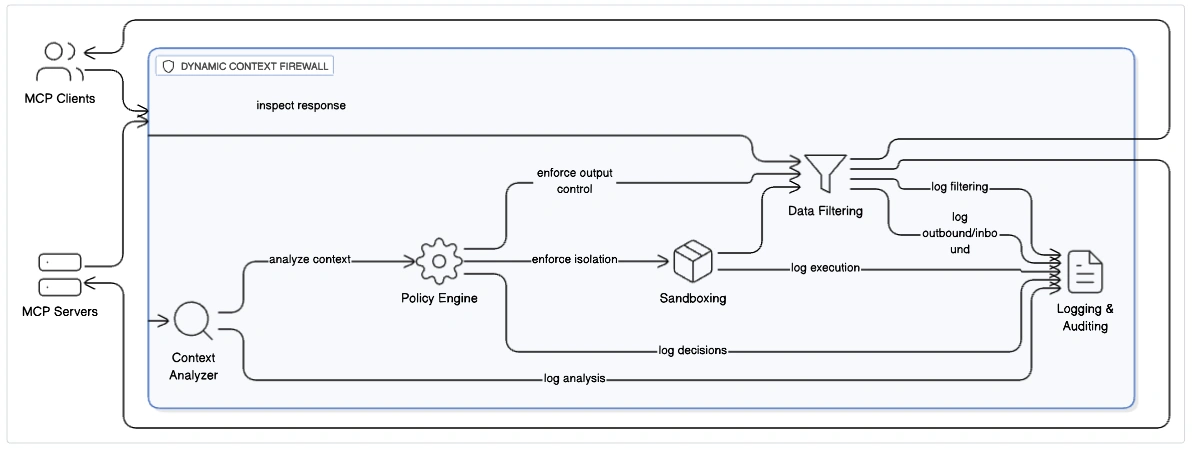Dynamic Context Firewall Enhances AI Security for MCP
A Dynamic Context Firewall for Model Context Protocol offers adaptive security for AI agent interactions, addressing risks like data exfiltration and malicious tool execution.
As AI agents become increasingly embedded in enterprise workflows, securing their interactions with external tools and data sources is paramount. A proposed solution, the Dynamic Context Firewall (DCF), aims to address these challenges by providing a context-aware security layer for the Model Context Protocol (MCP).
The Need for Adaptive Security
The MCP, introduced by Anthropic in 2024, has become the standard for structured communication between AI applications and external tools. However, its modularity introduces risks such as:
- Malicious tool execution
- Unintentional access to sensitive data
- Data exfiltration
- "Consent fatigue" from excessive permission prompts
Traditional security measures, designed for static environments, fall short in handling these dynamic threats.
How the Dynamic Context Firewall Works
The DCF acts as an intelligent intermediary between MCP Clients and Servers, analyzing each interaction in real time. Key features include:
- Context Analyzer: Parses metadata (user roles, tool functions, data locations) and infers intent using NLP.
- Policy Engine: Dynamically adapts access control, authentication, and data filtering policies.
- Sandboxing: Isolates tool execution to prevent unauthorized access.
- Data Filtering: Redacts sensitive information before responses leave the firewall.

Practical Applications
The DCF could revolutionize security in various scenarios:
- Enterprise AI Tools: Protecting access to confidential HR or financial data.
- Developer Environments: Safeguarding against malicious toolchains.
- Smart Assistants: Preventing data leakage when interacting with emails or cloud services.
- IoT and Industrial Automation: Offering fine-grained control over AI agent actions.
Differentiators from Legacy Systems
The DCF stands out due to its:
- Protocol-specific awareness for MCP
- Real-time adaptive policies based on risk and intent
- Machine learning integration to refine policies over time
Conclusion
As AI agents grow more capable, security solutions must evolve accordingly. The DCF represents a visionary approach—combining context-awareness, real-time adaptation, and protocol-specific protections to enable secure AI workflows.
Stay connected with Cisco Security on social media:
Related News
CometJacking Attack Hijacks Perplexity AI Browser to Steal User Data
A malicious URL exploit turns Perplexity's Comet AI browser into a data thief, exfiltrating emails, calendar, and memory via encoded payloads.
Zero Trust Auditing Essential for AI Era Cybersecurity
Exploring how Zero Trust Auditing is redefining enterprise assurance in the AI era by continuously verifying trust across devices, networks, and AI systems.
About the Author

Michael Rodriguez
AI Technology Journalist
Veteran technology journalist with 12 years of focus on AI industry reporting. Former AI section editor at TechCrunch, now freelance writer contributing in-depth AI industry analysis to renowned media outlets like Wired and The Verge. Has keen insights into AI startups and emerging technology trends.